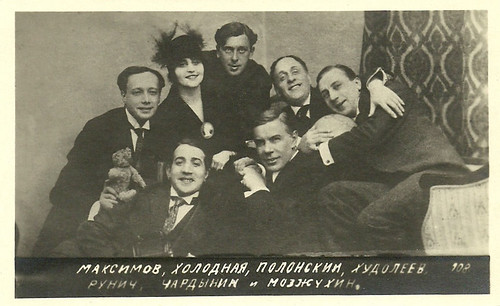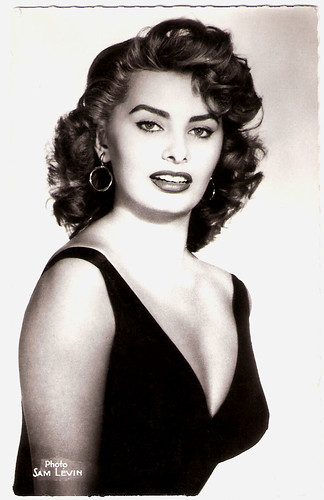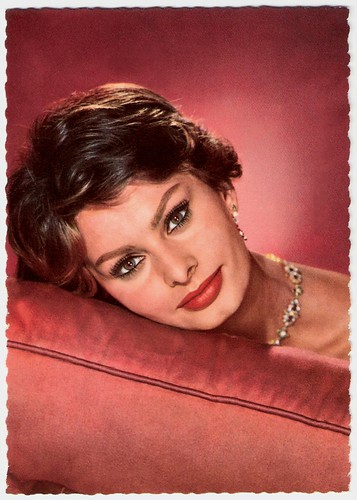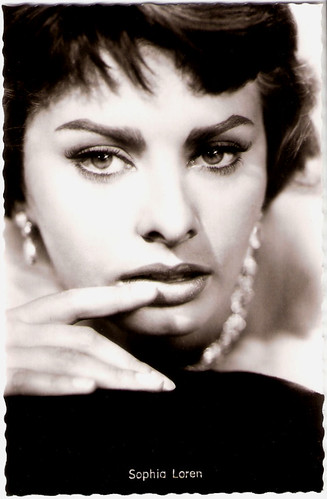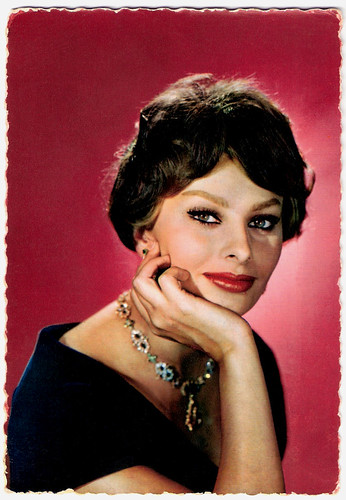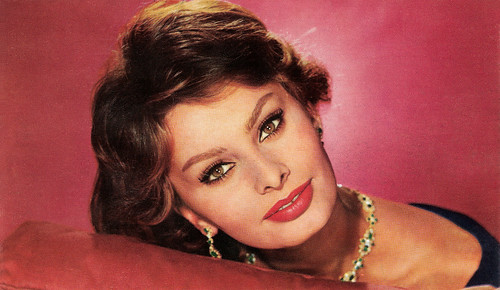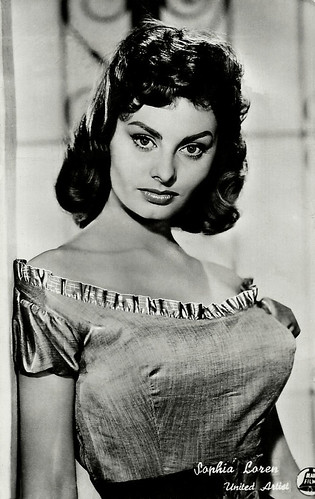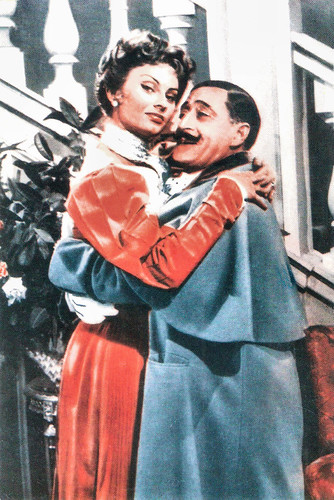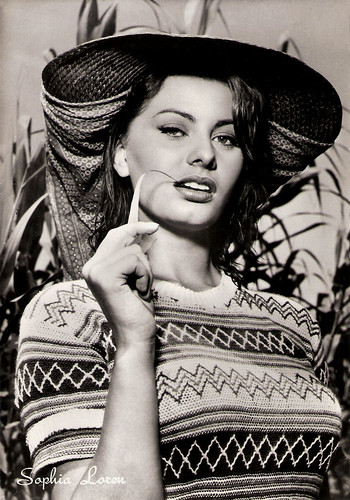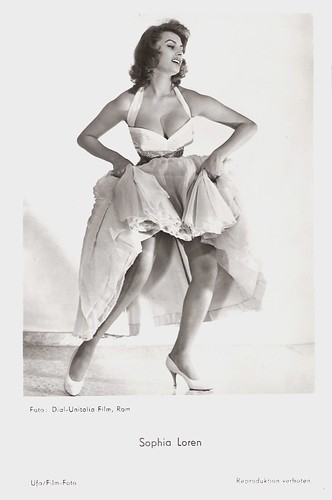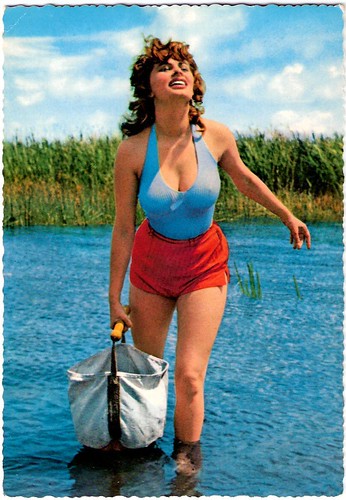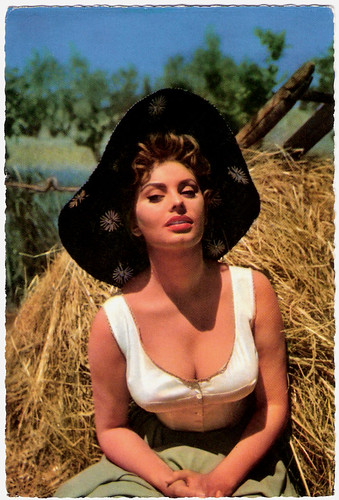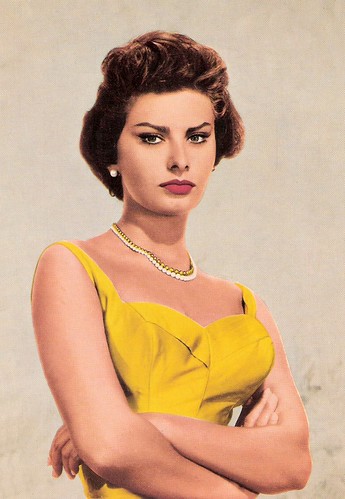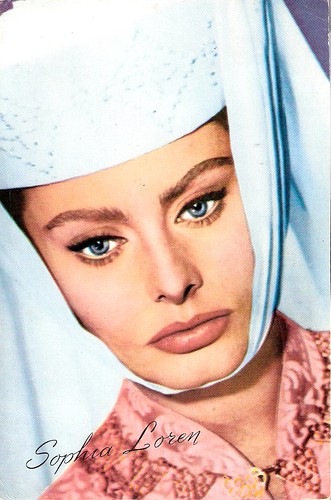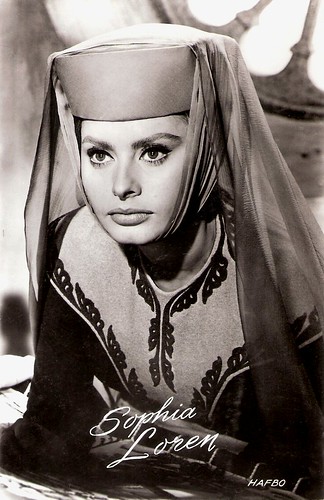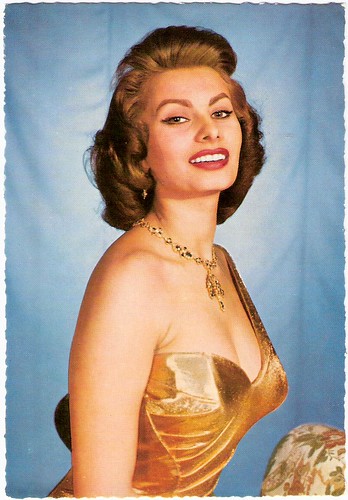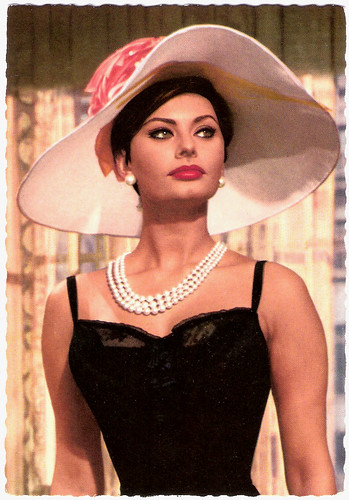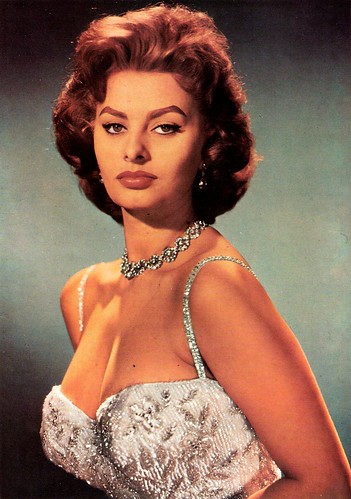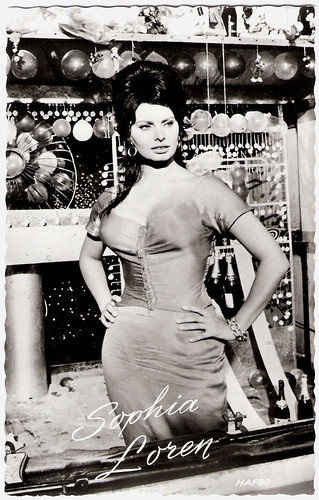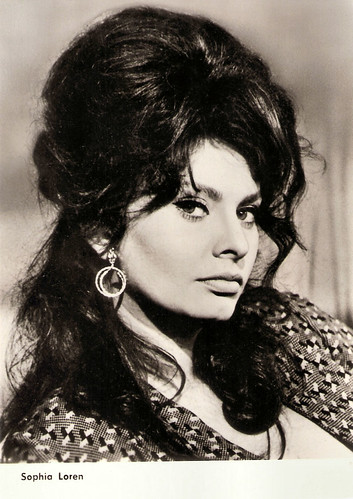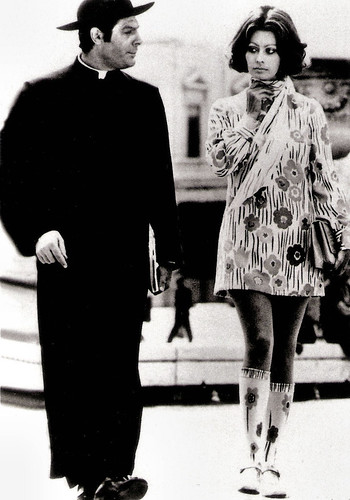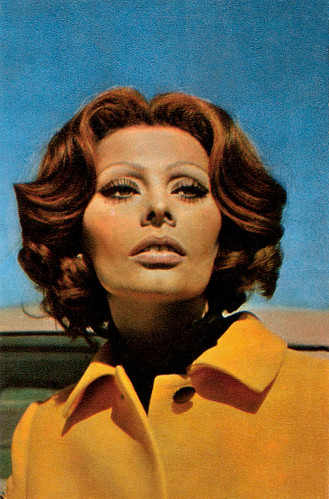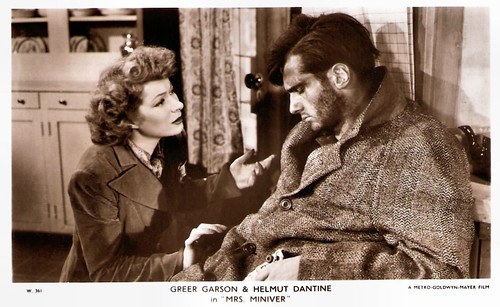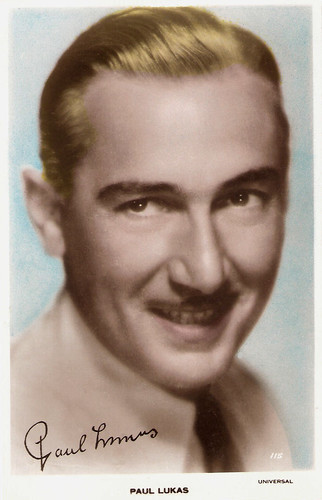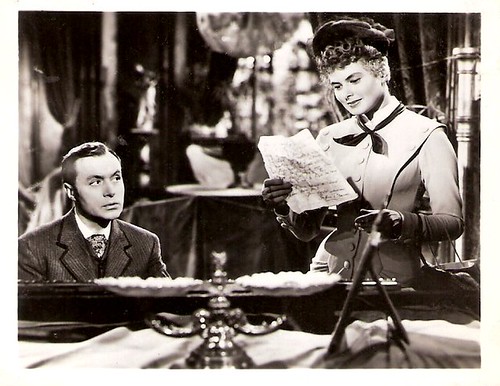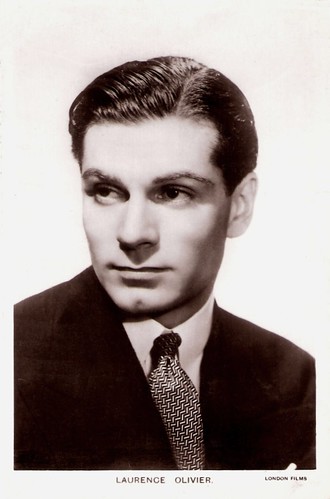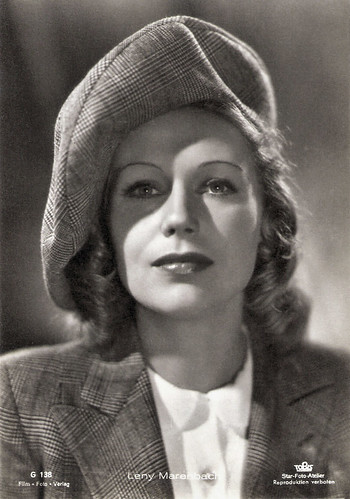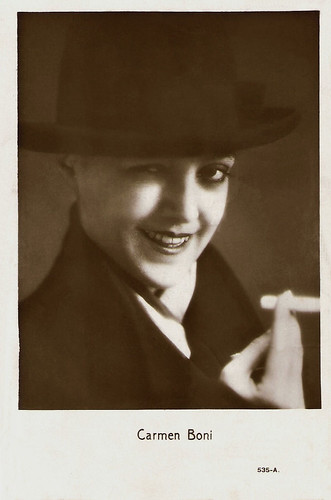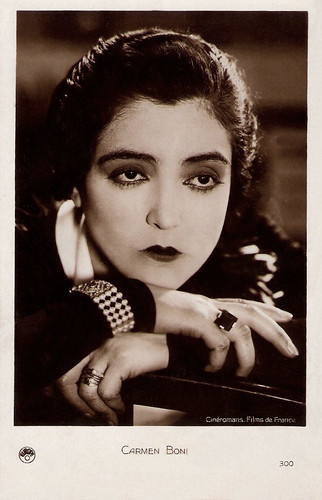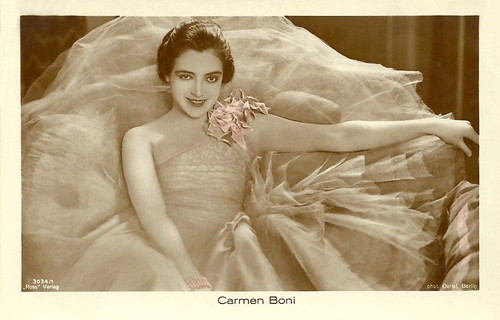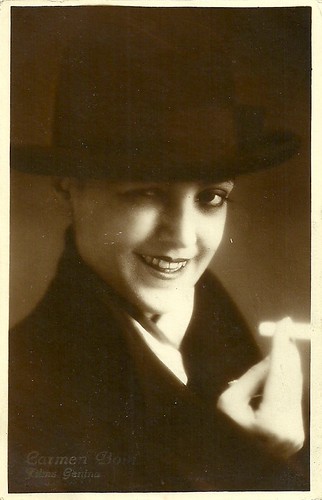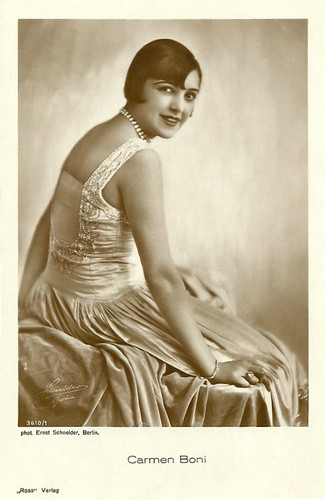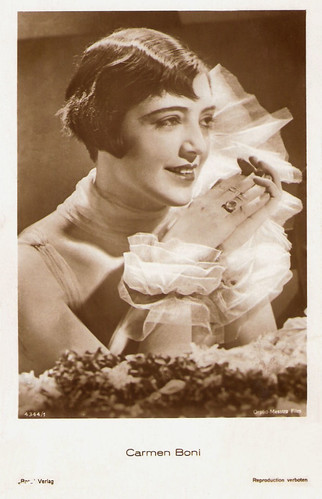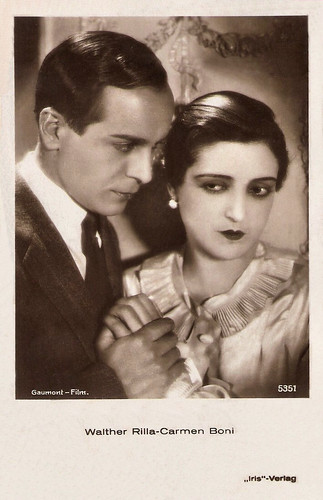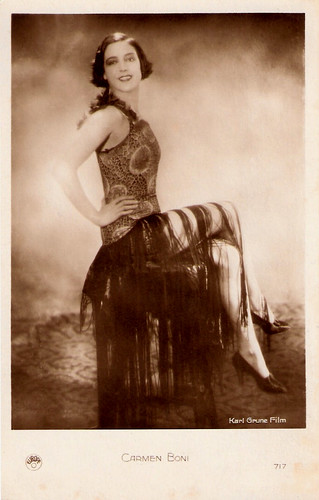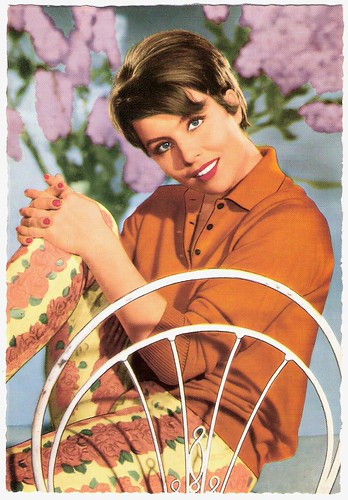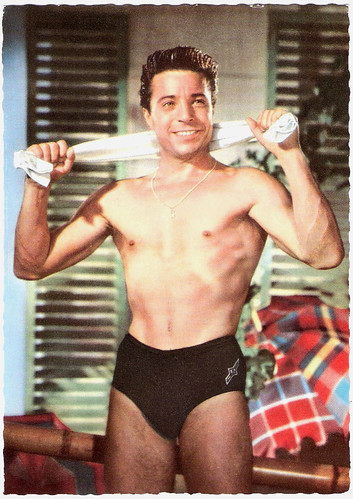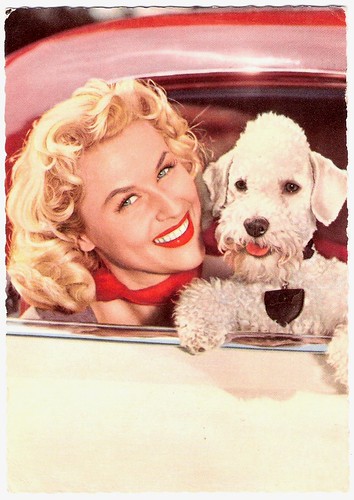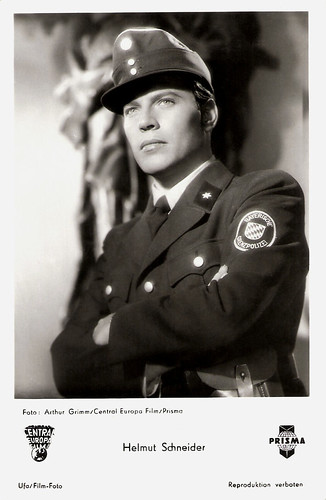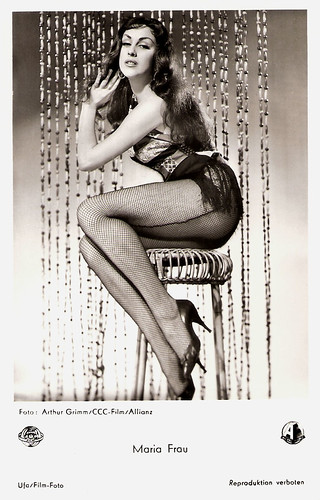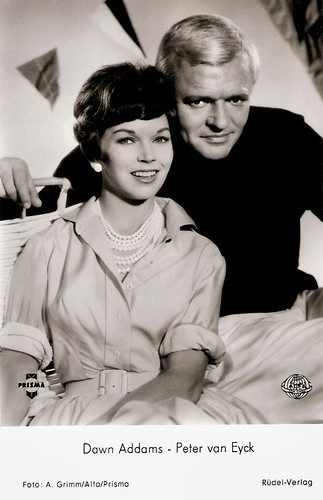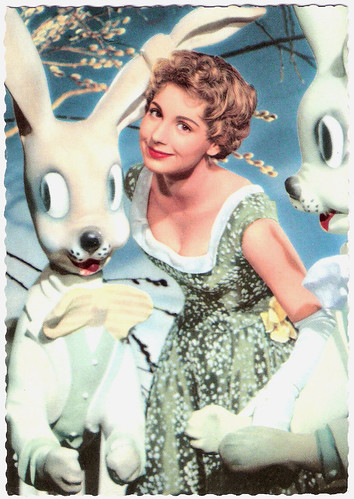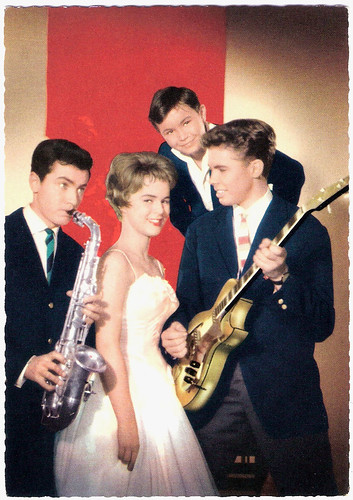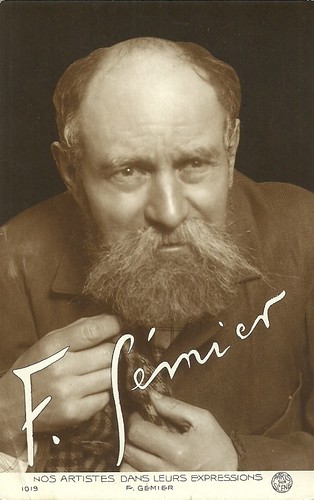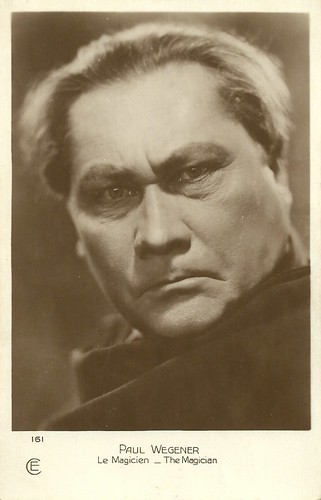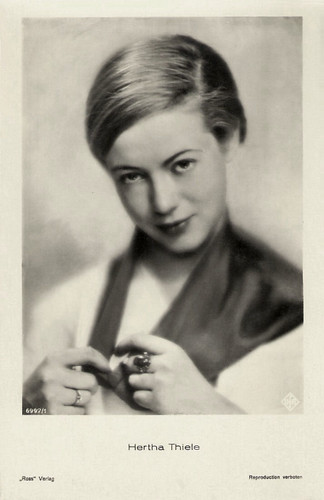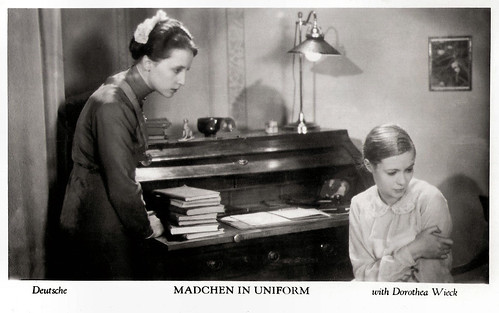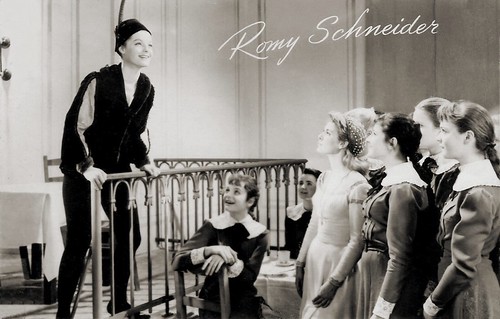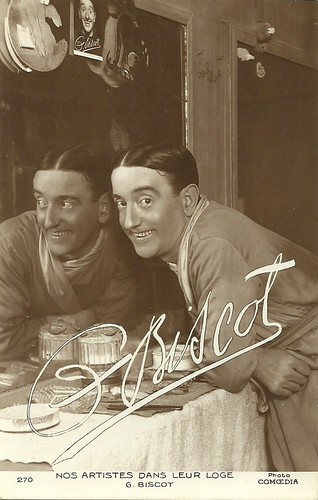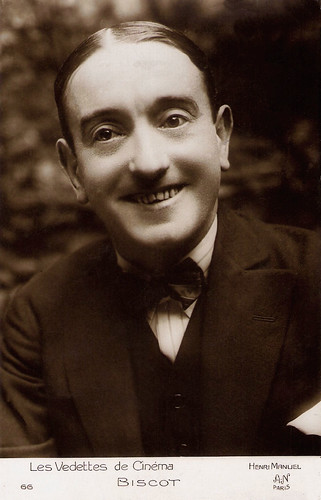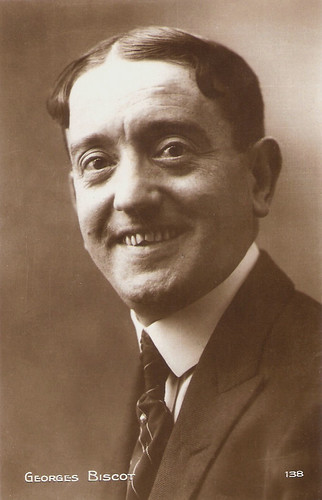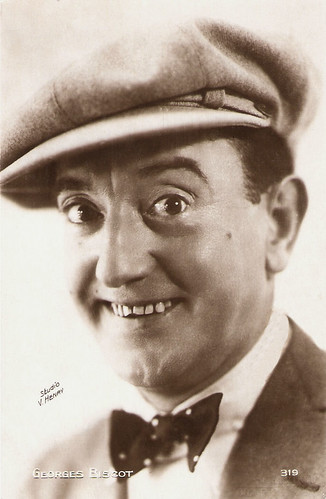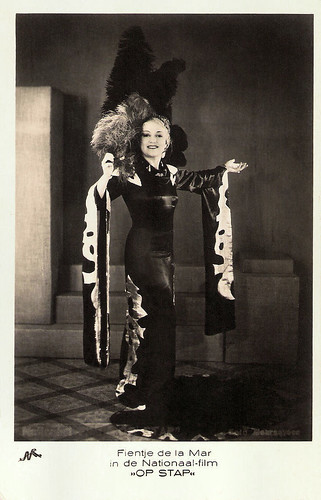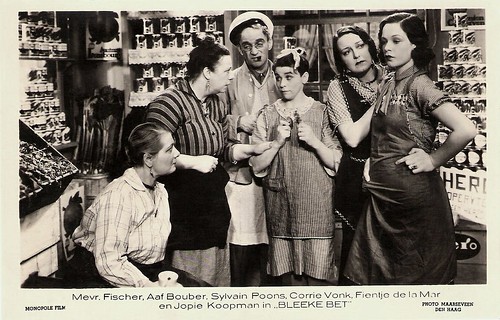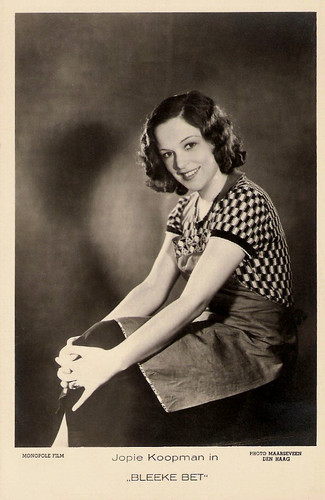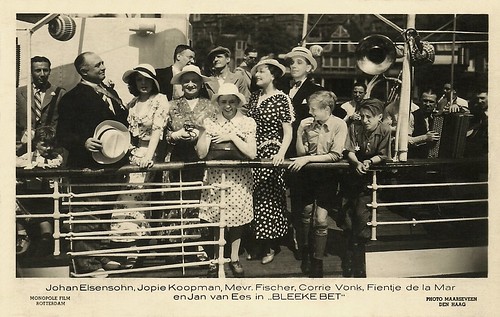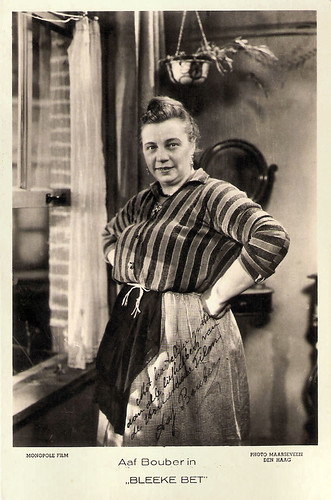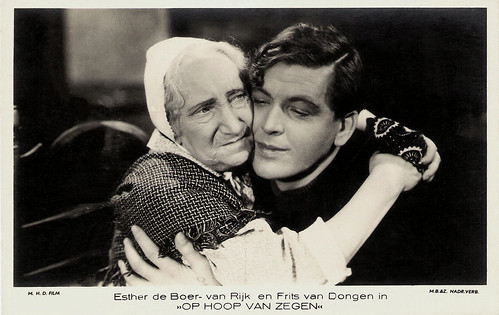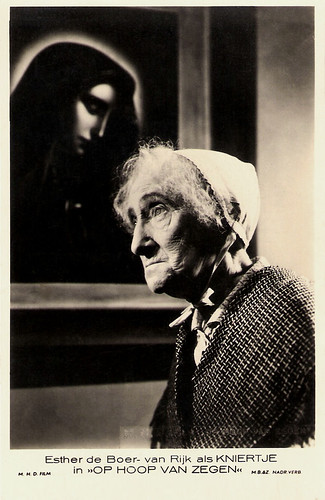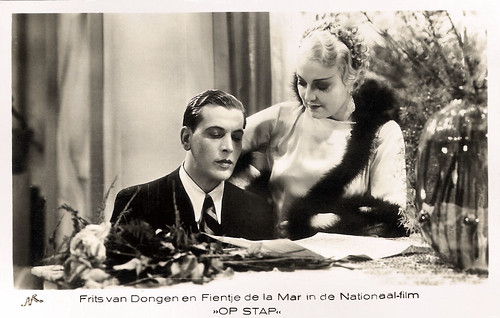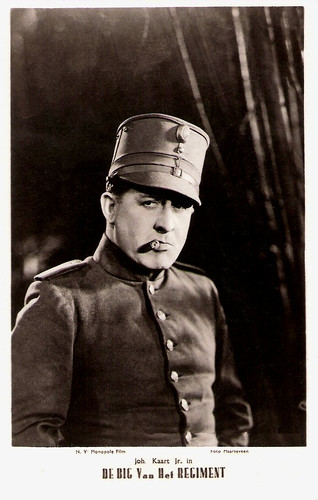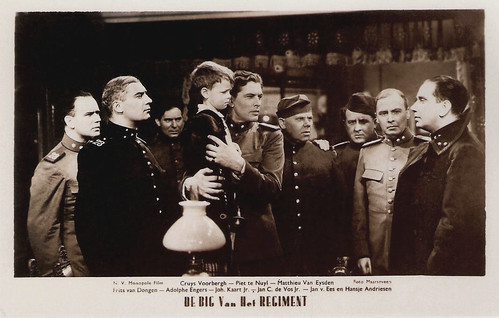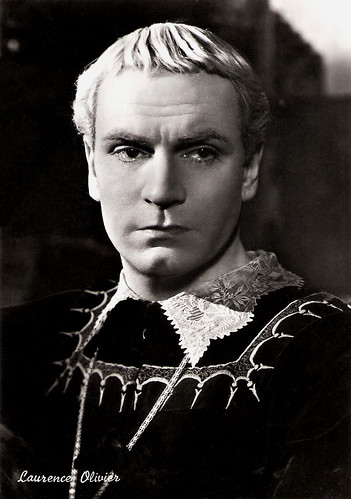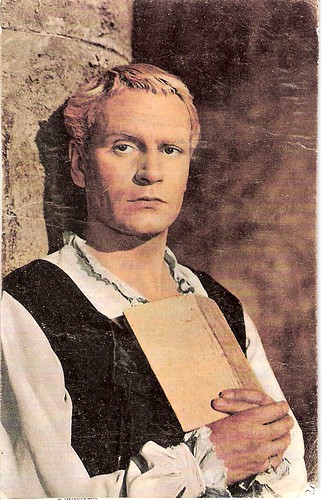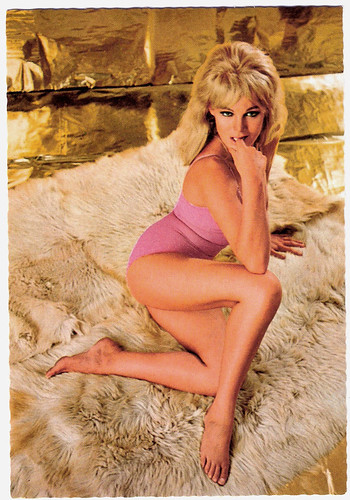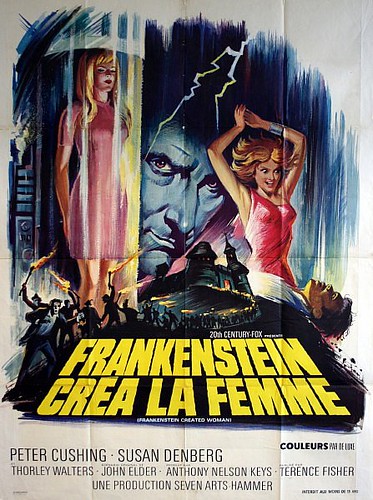Tita Binz (1903-1970) was a German photographer, who portrayed in her Atelier Binz many of the film stars of the Third Reich. For Film-Foto-Verlag, she also made portraits of the soldiers who were holders of the Knight's Cross.
![Irene von Meyendorff]()
Irene von Meyendorff. German postcard by Ross-Verlag, no. A 3035/1, 1941-1944. Photo: Binz, Berlin.
![Hansi Knoteck]()
Hansi Knoteck. German postcard by Ross Verlag, Berlin, no. A 3218/2, 1941-1944. Photo: Binz, Berlin.
![Maria Landrock]()
Maria Landrock. German postcard by Ross Verlag, no. A 3309/2, 1941-1944. Photo: Tobis / Binz.
![Kirsten Heiberg]()
Kirsten Heiberg. German postcard by Ross Verlag, no. A 3373/1, 1941-1944. Photo: Binz, Berlin.
![Winnie Markus]()
Winnie Markus. German postcard by Film-Foto-Verlag, no. A 3714/1, 1941-1944. Photo: Binz / Berlin-Film.
Tita Binz was born as Juanita Ladewig in Frankfurt am Main in 1903. Binz was the daughter of the chemist Prof. Arthur Binz and his wife, the writer Juanita Reutlinger. In 1911, her family moved to Berlin. During her school years Tita was already fascinated by photography.
From 1928 till 1930, she did an apprenticeship in Paris at the photo studio of her uncle, the famous photographer Léopold Reutlinger. The renowned Reutlinger Studio was opened in 1850 and had become one of the most prestigious photo studios internationally since then.
Later, Binz settled in Berlin. She first earned her living as an assistant in photo studios, but in 1938 she opened her own studio, Foto Binz, located on the chic Kurfürstendamm. Her studio had five employees.
From the start, Foto Binz specialized in portrait photography. Tita Binz portrayed actors, scientists, artists as Käthe Kollwitz, authors, but also military and politicians. The newspaper Berliner Tageblatt praised her for "her talent to show the personality of the person she portrayed".
One of the first clients of Foto Binz was the publisher Film-Foto-Verlag, formerly Ross Verlag. Since 1937, Ross Verlag was no longer in the control of its Jewish founder, Heinrich Ross. The National Socialists had forced Ross out through their Arisierung (Aryanization) program (no Jews could own a business.)
Interestingly enough, the Nazis retained the Ross Verlag name until 1941, next to the new name Film-Foto-Verlag. Film-Foto-Verlag became known for its postcards of film stars who figured in the German and also in the fascist Italian cinema during the years just before and during World War II.
![Clara Calamai]()
Clara Calamai. German postcard by Ross Verlag, no. A 3171/1, 1941-1944. Photo: Binz / DIFU.
![Fosco Giachetti]()
Fosco Giachetti. German postcard by Film-Foto-Verlag, no. G 118, 1941-1944. Photo: DIFU / Binz, Berlin.
![Vivi Gioi]()
Vivi Gioi. German postcard by Ross-Verlag, no. A 3173/1, 1941-1944. Photo: Binz, Berlin / Difu.
![Viktor de Kowa]()
Viktor de Kowa. German postcard by Film-Foto-Verlag, no. A 3457/1, 1941-1944. Photo: Tobis / Foto Binz.
![Will Quadflieg]()
Will Quadflieg. German postcard by Film-Foto-Verlag, no. A 3525/2, 1941-1944. Photo: Foto Binz, Berlin.
![Paul Klinger]()
Paul Klinger. German postcard by Film-Foto-Verlag, no. A 3739/1, 1941-1944. Photo: Foto Binz, Berlin.
Tita Binz was also asked by Film-Foto-Verlag to portray soldiers who were holders of the Ritterkreuz (the Knight's Cross) for their R series of military propaganda postcards. The Nazi regime needed more propaganda and therefore the R series was started in 1939.
At his blog, Pantorijn writes: “It is at this point that two different worlds seem to run together at least in pictures. The actor, the hero of the silver screen and the soldier, the hero of the theatre of war were both raised in the same way. (…) it was not only the image itself but also the design of the postcard that ensured that these two worlds together began to look like one another. It was decided that the lay-out for actors also had to be used for the knight cross bearers.”
Pantorijn illustrates this with the example of film star Hannes Stelzer, a popular Ufa hero during the Nazi period. In 1941 he starred as a Luftwaffe pilot in the propaganda film Stukas (1941). Director of the film was Luftwaffe Major Karl Ritter and director and star worked five times together.
In 1941, Stelzer was photographed (by Baumann) for Ross-Verlag/Film-Foto-Verlag in a uniform of the Luftwaffe to promote Stukas. Two years later, Stelzer was obliged to report for active duty and got a pilot training. In 1944, the Luftwaffe pilot died when his airplane was shot in Russia.
Binz did never photograph the Waffen-SS. Pantorijn: “This might be due to the fact that she was friends with Hans Oster, a convinced opponent of the Nazi regime. She knew by that friendship also the 'conspirators'Erwin von Witzleben and Erich Hoepner who she portrayed all three. These pictures were not made for Film-Foto-Verlag.”
Immediately after World War II ended in 1945, Tita Binz left Berlin. Until 1949, she lived and worked in Heidelberg. That year, she moved to Mannheim.
Tita Binz died in 1970 in Mannheim at the age of 67. In the collection of the Deutsches Historisches Museum (DHM) are her portraits of Konrad Adenauer, Luise Rinser, Viktor de Kowa, Otto Hahn, Gustav Heinemann, Theodor Heuss, and many other celebrities.
![Paul Wegener]()
Paul Wegener. German postcard by Ross Verlag, no. A 3283/1, 1941-1944. Photo: Tobis / Foto Binz.
![Karl Schönböck]()
Karl Schönbock. German postcard by Film-Foto-Verlag, no. A 3572/1, 1941-1944. Photo: Foto Binz, Berlin.
![Wolf Albach-Retty]()
Wolf Albach-Retty. German postcard by Film-Foto-Verlag, no. A 3585/1, 1941-1944. Photo: Foto Binz, Berlin.
![Theo Lingen]()
Theo Lingen. German Postcard by Film-Foto-Verlag, no. A 3799/1, 1941-1944. Photo: Foto Binz, Berlin.
![Paul Kemp]()
Paul Kemp. German postcard by Film-Foto-Verlag, no. A 3864/1, 1941-1944. Photo: Foto Binz / Bavaria Filmkunst.
![Joachim Brennecke]()
Joachim Brennecke. German postcard by Ross-Verlag, no. G 82, 1941-1944. Photo: Foto Binz, Berlin.
Check out our other posts on film star photographers. See the links at right under the caption 'The Photographers'.
Sources: Pantorijn, Film.Foto.Verlag.comhttp://www.filmfotoverlag.com/about-the-r-series.html, DHM (German), Wikipedia (German), and IMDb.

Irene von Meyendorff. German postcard by Ross-Verlag, no. A 3035/1, 1941-1944. Photo: Binz, Berlin.

Hansi Knoteck. German postcard by Ross Verlag, Berlin, no. A 3218/2, 1941-1944. Photo: Binz, Berlin.

Maria Landrock. German postcard by Ross Verlag, no. A 3309/2, 1941-1944. Photo: Tobis / Binz.

Kirsten Heiberg. German postcard by Ross Verlag, no. A 3373/1, 1941-1944. Photo: Binz, Berlin.
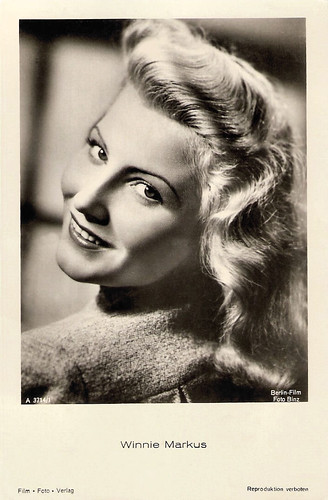
Winnie Markus. German postcard by Film-Foto-Verlag, no. A 3714/1, 1941-1944. Photo: Binz / Berlin-Film.
Showing personality
Tita Binz was born as Juanita Ladewig in Frankfurt am Main in 1903. Binz was the daughter of the chemist Prof. Arthur Binz and his wife, the writer Juanita Reutlinger. In 1911, her family moved to Berlin. During her school years Tita was already fascinated by photography.
From 1928 till 1930, she did an apprenticeship in Paris at the photo studio of her uncle, the famous photographer Léopold Reutlinger. The renowned Reutlinger Studio was opened in 1850 and had become one of the most prestigious photo studios internationally since then.
Later, Binz settled in Berlin. She first earned her living as an assistant in photo studios, but in 1938 she opened her own studio, Foto Binz, located on the chic Kurfürstendamm. Her studio had five employees.
From the start, Foto Binz specialized in portrait photography. Tita Binz portrayed actors, scientists, artists as Käthe Kollwitz, authors, but also military and politicians. The newspaper Berliner Tageblatt praised her for "her talent to show the personality of the person she portrayed".
One of the first clients of Foto Binz was the publisher Film-Foto-Verlag, formerly Ross Verlag. Since 1937, Ross Verlag was no longer in the control of its Jewish founder, Heinrich Ross. The National Socialists had forced Ross out through their Arisierung (Aryanization) program (no Jews could own a business.)
Interestingly enough, the Nazis retained the Ross Verlag name until 1941, next to the new name Film-Foto-Verlag. Film-Foto-Verlag became known for its postcards of film stars who figured in the German and also in the fascist Italian cinema during the years just before and during World War II.

Clara Calamai. German postcard by Ross Verlag, no. A 3171/1, 1941-1944. Photo: Binz / DIFU.
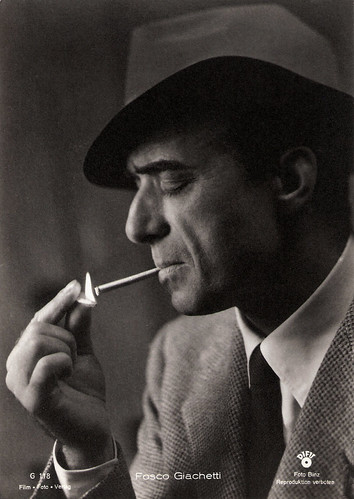
Fosco Giachetti. German postcard by Film-Foto-Verlag, no. G 118, 1941-1944. Photo: DIFU / Binz, Berlin.
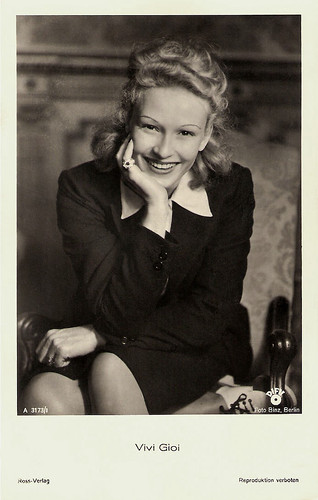
Vivi Gioi. German postcard by Ross-Verlag, no. A 3173/1, 1941-1944. Photo: Binz, Berlin / Difu.

Viktor de Kowa. German postcard by Film-Foto-Verlag, no. A 3457/1, 1941-1944. Photo: Tobis / Foto Binz.

Will Quadflieg. German postcard by Film-Foto-Verlag, no. A 3525/2, 1941-1944. Photo: Foto Binz, Berlin.

Paul Klinger. German postcard by Film-Foto-Verlag, no. A 3739/1, 1941-1944. Photo: Foto Binz, Berlin.
Propaganda Postcards
Tita Binz was also asked by Film-Foto-Verlag to portray soldiers who were holders of the Ritterkreuz (the Knight's Cross) for their R series of military propaganda postcards. The Nazi regime needed more propaganda and therefore the R series was started in 1939.
At his blog, Pantorijn writes: “It is at this point that two different worlds seem to run together at least in pictures. The actor, the hero of the silver screen and the soldier, the hero of the theatre of war were both raised in the same way. (…) it was not only the image itself but also the design of the postcard that ensured that these two worlds together began to look like one another. It was decided that the lay-out for actors also had to be used for the knight cross bearers.”
Pantorijn illustrates this with the example of film star Hannes Stelzer, a popular Ufa hero during the Nazi period. In 1941 he starred as a Luftwaffe pilot in the propaganda film Stukas (1941). Director of the film was Luftwaffe Major Karl Ritter and director and star worked five times together.
In 1941, Stelzer was photographed (by Baumann) for Ross-Verlag/Film-Foto-Verlag in a uniform of the Luftwaffe to promote Stukas. Two years later, Stelzer was obliged to report for active duty and got a pilot training. In 1944, the Luftwaffe pilot died when his airplane was shot in Russia.
Binz did never photograph the Waffen-SS. Pantorijn: “This might be due to the fact that she was friends with Hans Oster, a convinced opponent of the Nazi regime. She knew by that friendship also the 'conspirators'Erwin von Witzleben and Erich Hoepner who she portrayed all three. These pictures were not made for Film-Foto-Verlag.”
Immediately after World War II ended in 1945, Tita Binz left Berlin. Until 1949, she lived and worked in Heidelberg. That year, she moved to Mannheim.
Tita Binz died in 1970 in Mannheim at the age of 67. In the collection of the Deutsches Historisches Museum (DHM) are her portraits of Konrad Adenauer, Luise Rinser, Viktor de Kowa, Otto Hahn, Gustav Heinemann, Theodor Heuss, and many other celebrities.
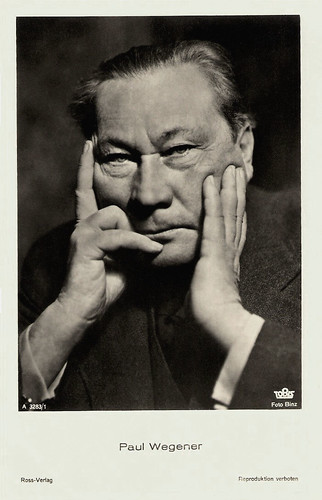
Paul Wegener. German postcard by Ross Verlag, no. A 3283/1, 1941-1944. Photo: Tobis / Foto Binz.
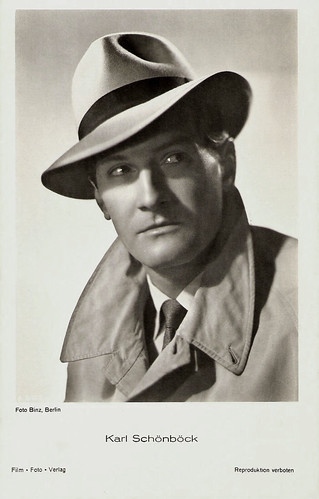
Karl Schönbock. German postcard by Film-Foto-Verlag, no. A 3572/1, 1941-1944. Photo: Foto Binz, Berlin.

Wolf Albach-Retty. German postcard by Film-Foto-Verlag, no. A 3585/1, 1941-1944. Photo: Foto Binz, Berlin.

Theo Lingen. German Postcard by Film-Foto-Verlag, no. A 3799/1, 1941-1944. Photo: Foto Binz, Berlin.

Paul Kemp. German postcard by Film-Foto-Verlag, no. A 3864/1, 1941-1944. Photo: Foto Binz / Bavaria Filmkunst.

Joachim Brennecke. German postcard by Ross-Verlag, no. G 82, 1941-1944. Photo: Foto Binz, Berlin.
Check out our other posts on film star photographers. See the links at right under the caption 'The Photographers'.
Sources: Pantorijn, Film.Foto.Verlag.comhttp://www.filmfotoverlag.com/about-the-r-series.html, DHM (German), Wikipedia (German), and IMDb.










